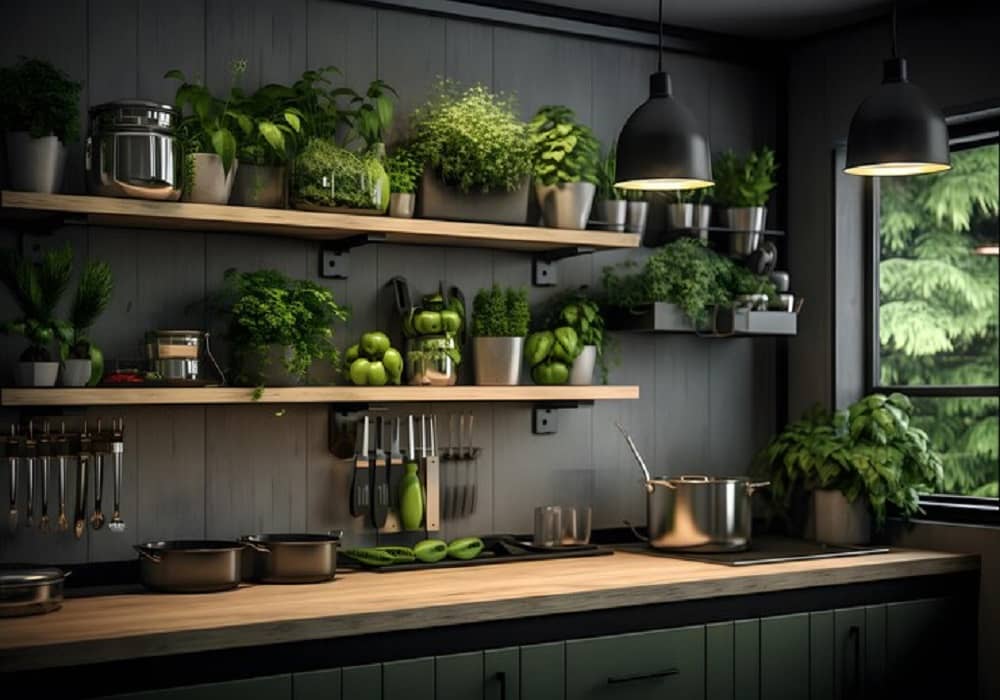Grow Your Own Flavor: Best Plants for a Kitchen Garden in India
A kitchen garden is a fantastic way to ensure that you have fresh, organic produce right at your fingertips. In India, with its diverse climate, there are numerous plants that thrive and provide a bountiful harvest. Whether you have a small balcony, a terrace, or a backyard, you can start your kitchen garden and enjoy the benefits of home-grown vegetables, herbs, and fruits. In this article, we will explore the best plants for kitchen garden in India, along with tips on how to cultivate them effectively.
1. Tomatoes (Lycopersicon esculentum)
Tomatoes are a staple in Indian cuisine, used in a variety of dishes from curries to salads. They are easy to grow and require minimal space, making them perfect for kitchen gardens.
Tips for Growing Tomatoes:
- Sunlight: Tomatoes require six to eight hours a day of direct sunlight.
- Soil: Make use of organic matter-rich, well-drained soil.
- Watering: Make sure the soil is constantly damp but not soggy.
- Support: Give the plant a cage or stake to help support its growth.
2. Coriander: Plants for Kitchen Garden in India
Coriander, also known as cilantro or dhania, is a must-have herb in Indian kitchens. Its fresh leaves add a burst of flavor to various dishes.
Tips for Growing Coriander:
- Sunlight: Coriander prefers partial sunlight.
- Soil: Well-drained, loamy soil is ideal.
- Watering: To keep the soil moist, water frequently, but do not overwater.
- Harvesting: Cut the leaves regularly to encourage new growth.
3. Spinach (Spinacia oleracea)
A leafy green that grows swiftly and is nutrient-dense, spinach can be picked several times. To a kitchen garden, it is a great addition.
Tips for Growing Spinach:
- Sunlight: Spinach thrives in partial shade.
- Soil: Rich, well-drained soil is best.
- Watering: Keep the soil consistently moist.
- Harvesting: When the outer leaves are still young and fragile, harvest them.
4. Green Chilies
Green chilies are essential for adding spice to Indian dishes. They are easy to grow and can be harvested frequently.
Tips for Growing Green Chilies:
- Sunlight: Green chilies need full sunlight.
- Soil: Well-drained soil enriched with compost.
- Watering: Maintain a regular watering schedule to keep the soil damp but not soggy.
- Support: Provide a stake for support as the plant grows taller.
5. Mint (Mentha spp.)
Mint is a versatile herb used in chutneys, beverages, and garnishes. It is a fast-growing plant that can thrive in containers.
Tips for Growing Mint:
- Sunlight: Mint prefers partial shade to full sunlight.
- Soil: Moist, well-drained soil with organic matter.
- Watering: Keep the soil consistently moist.
- Containment: Grow mint in a pot to prevent it from spreading uncontrollably.
6. Lemongrass (Cymbopogon citratus)
Lemongrass adds a unique flavor to many dishes and is also known for its medicinal properties. It is a hardy plant that can be easily grown in a kitchen garden.
Tips for Growing Lemongrass:
- Sunlight: Full sunlight is ideal.
- Soil: Well-drained, sandy soil.
- Watering: Water frequently, but let the soil dry up in between applications.
- Spacing: Plant lemongrass with enough space to allow it to spread.
7. Fenugreek (Trigonella foenum-graecum)
Fenugreek, or methi, is a popular herb in Indian cooking. It grows swiftly and yields numerous harvests.
Tips for Growing Fenugreek:
- Sunlight: Partial to full sunlight.
- Soil: Well-drained, loamy soil.
- Watering: Maintain a damp but not soggy soil.
- Harvesting: When the leaves are fresh and fragile, cut them.
8. Brinjal (Solanum melongena)
Brinjal, also known as eggplant, is a versatile vegetable used in various Indian dishes. It is relatively easy to grow and produces a good yield.
Tips for Growing Brinjal:
- Sunlight: At least six to eight hours a day in full sunshine.
- Soil: Rich, well-drained soil.
- Watering: Water often to maintain a constant moisture content in the soil.
- Support: Provide support as the plant grows taller.
9. Curry Leaves (Murraya koenigii)
A necessary component of South Indian cooking are curry leaves. They can be planted directly in the ground or grown in pots.
Tips for Growing Curry Leaves:
- Sunlight: Full sunlight is ideal.
- Soil: Well-drained, fertile soil.
- Watering: Water regularly but avoid waterlogging.
- Pruning: Prune regularly to encourage bushy growth.
10. Basil (Ocimum basilicum)
Basil, or tulsi, is a sacred herb in India and is also used in various culinary dishes. It is very beneficial to health and is simple to grow.
Tips for Growing Basil:
- Sunlight: Full sunlight for at least 6 hours a day.
- Soil: Well-drained, fertile soil.
- Watering: Don’t let the soil get too wet.
- Harvesting: Pinch off the tips to encourage bushier growth.
Conclusion
Starting a kitchen garden in India is a rewarding and sustainable way to ensure you have fresh, organic produce at your fingertips. By choosing the right plants for kitchen garden in India and following proper cultivation techniques, you can enjoy a bountiful harvest year-round. Tomatoes, coriander, spinach, green chilies, mint, lemongrass, fenugreek, brinjal, curry leaves, and basil are some of the best plants for a kitchen garden in India. Happy gardening!






